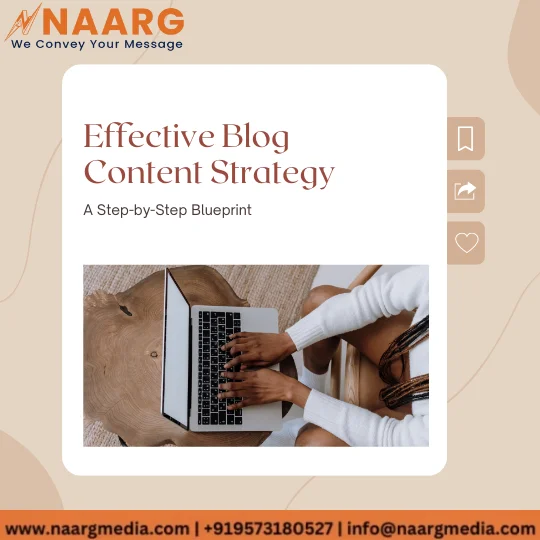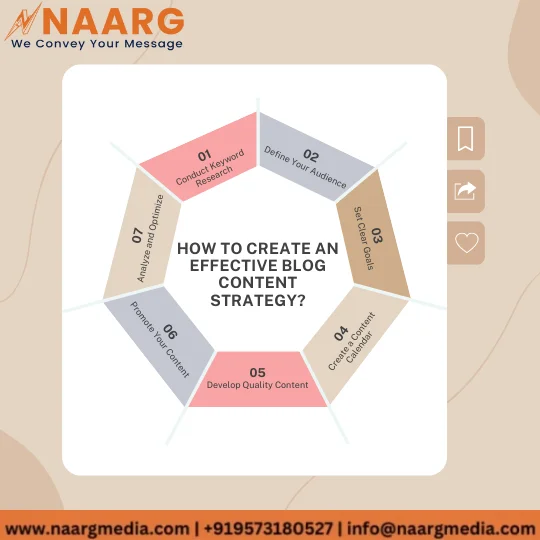Imagine your blog — a lonely island in the vast digital sea. Sure, you have content, but how will anyone find it?
In today’s competitive online landscape, simply writing isn’t enough. You need a map—a treasure map—leading readers to your content and your business. This map is your blog’s content strategy.
By aligning your content with your goals and audience needs, you can transform your blog from a deserted island into a thriving hub, attracting visitors, sparking engagement, and driving conversions.

Why is Blog Content Strategy Important?
Having a blog content strategy is like having a roadmap for your content marketing journey. Without it, your efforts might be haphazard, leading to inconsistent results. A well-defined strategy helps in several critical areas, ensuring your blog’s success and growth.
The power of blogging is undeniable. With over 600 million blogs active worldwide, and a staggering 80% of bloggers reporting positive results, it’s clear that content creation is a winning strategy. Social media plays a vital role in this success, with a whopping 96% of bloggers leveraging these platforms to promote their content.
Firstly, a strong blog content strategy significantly improves SEO (search engine optimization). By strategically using keywords, you can improve your search engine rankings, making your content more discoverable to potential readers.
This increased visibility drives organic traffic to your blog, which is essential for long-term success.
Secondly, understanding your audience is crucial for effective audience engagement. A detailed content strategy involves researching and knowing your audience’s preferences and pain points.
This knowledge allows you to create content that resonates with them, fostering a deeper connection and encouraging regular readership. Engaged audiences are more likely to share your content, further amplifying your reach.
Thirdly, having a clear plan streamlines content creation. It ensures that you consistently produce high-quality content aligned with your brand’s goals. Planning topics, keywords, and publication schedules in advance means you’re always prepared, avoiding last-minute scrambles.
This consistency is key to building trust and credibility with your audience.
Lastly, a well-defined blog content strategy enables you to track performance effectively. By analyzing metrics such as page views, time on page, and conversion rates, you can understand what works and what doesn’t.
This data-driven approach allows you to refine your strategy over time, optimizing content for better engagement and results.
How to Create an Effective Blog Content Strategy?
Creating a blog content strategy involves several steps that ensure your content is aligned with your goals and audience.
Here’s a step-by-step guide:

1. Conduct Keyword Research
Keyword research is the backbone of your blog’s content strategy. Using tools like Google Keyword Planner, SEMrush, and Ahrefs, you can identify relevant keywords that your target audience frequently searches for.
This process involves focusing on both short-tail and long-tail keywords to capture a broad and specific audience. Effective SEO begins with choosing the right keywords that can improve your search engine rankings and make your content more discoverable.
By understanding what your audience is searching for, you can tailor your content to meet their needs, driving organic traffic and enhancing your blog’s visibility.
2. Define Your Audience
Producing relevant and interesting content requires a thorough understanding of your audience. Start by developing detailed personas that include demographic information, interests, and pain points.
This will guide your content creation, ensuring that each post resonates with your readers and addresses their specific needs. Effective audience engagement comes from knowing who you are writing for and what they are looking for.
By tailoring your content to fit your audience’s preferences, you can foster a deeper connection with your readers, encouraging loyalty and regular visits to your blog.
3. Set Clear Goals
Setting clear goals is essential for a successful blog content strategy. Whether you aim to drive traffic, build an email list, or increase sales, having specific objectives helps you measure success and stay focused.
For optimum effect, coordinate these objectives with your broader corporate goals. Clear goals not only provide direction but also make it easier to track progress and make informed decisions about your content strategy.
By knowing what you want to achieve, you can create content that directly supports these objectives, leading to more effective and efficient outcomes.
4. Create a Content Calendar
A content calendar is a vital tool for maintaining consistency and organization in your blog content strategy. Planning your topics, keywords, and publication dates helps ensure that you are consistently producing and publishing content.
This regularity is crucial for maintaining audience interest and improving your SEO. A well-structured content calendar allows you to plan around important dates and events, coordinate with marketing campaigns, and manage your workload efficiently.
By staying organized, you can avoid last-minute scrambles and ensure that your content is always timely and relevant.
5. Develop Quality Content
Quality content is the cornerstone of any successful blog content strategy. Concentrate on producing material that offers your readers genuine value. Use a mix of formats, such as articles, infographics, and videos, to keep your audience engaged and interested.
High-quality content is more likely to be shared and generate backlinks, which enhances your site’s authority and improves your search engine rankings. Remember, it’s not just about quantity; the content must be well-researched, well-written, and relevant to your audience’s needs and interests.
With your audience, this strategy fosters credibility and trust.
6. Promote Your Content
Creating outstanding content is only half the battle won; the other half is effective promotion. Utilize social media platforms, email newsletters, and other channels to share your blog posts and reach a wider audience.
Engage with your readers by responding to comments and encouraging sharing. Effective content marketing not only boosts visibility but also drives traffic back to your blog.
By actively promoting your content, you can increase its reach and impact, ensuring that your efforts in creating high-quality posts pay off in terms of readership and engagement.
7. Analyze and Optimize
Regular analysis and optimization are critical for the success of your blog content strategy. Use analytics tools to track key performance metrics such as page views, time on page, and conversion optimization.
This data helps you understand what resonates with your audience and what doesn’t. Based on these insights, continuously optimize your content and strategy to improve engagement and results.
By keeping a close eye on your blog’s performance and making data-driven adjustments, you can ensure that your content remains relevant and effective in achieving your goals.
Conclusion
Developing an effective blog content strategy is essential for any business looking to thrive in the digital space. By following the steps outlined above, you can create a plan that not only attracts but also engages your audience.
Remember, a successful strategy is dynamic and evolves with changing trends and audience preferences. Keep analyzing, optimizing, and adapting to stay ahead of the curve.
Are you prepared to expand your blog further? Start by implementing these steps and seeing the difference a well-crafted blog content strategy can make.
Need help getting started? Collaborate with Naarg today and watch your audiences shoot the skies!
